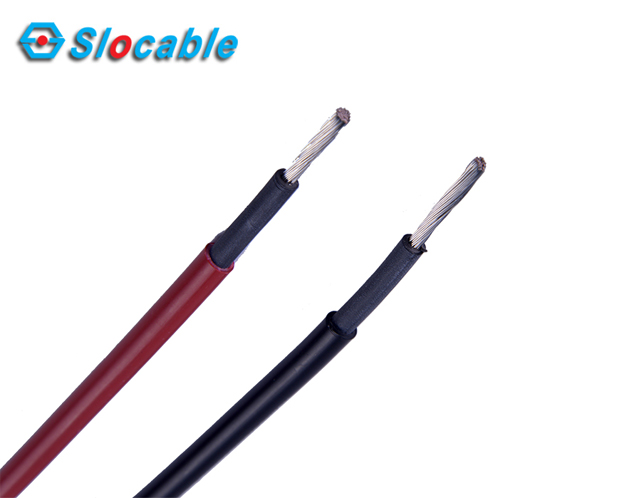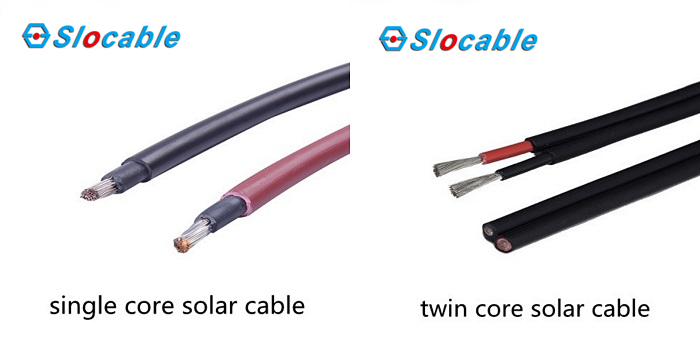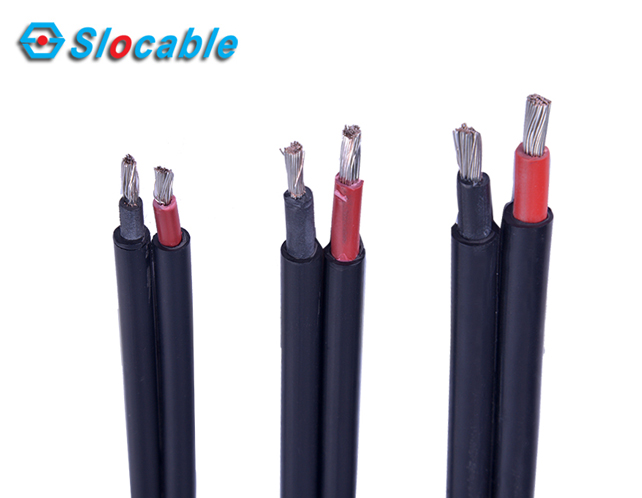How to Choose Photovoltaic Cables for Photovoltaic Systems?
The price of copper has risen recently, and the price of cables has also risen. In the total cost of photovoltaic systems, the cost of accessories such as photovoltaic cables and switches has exceeded that of inverters, and is only lower than components and supports. When we get the drawing of the design company and know the parameters of the wire type, thickness, color, etc., we can start purchasing with the list. However, there are many kinds of wires, and many users are puzzled by so many kinds of wires. Which one is better?
When choosing a photovoltaic cable, we must first look at two aspects: the conductor and the insulating layer. As long as these two parts are okay, the quality of the wire is proved to be reliable.
1. Conductor
Strip the insulation of the cable to expose the copper wire inside, this is the conductor. We can judge the quality of conductors from two perspectives:
01. color
Although the conductors are all called “copper”, they are not 100% pure copper, and there will be some impurities in them. The more impurities contained, the worse the conductivity of the conductor. The amount of impurities contained in the conductor will generally be reflected in the color.
The best quality copper is called “red copper” or “red copper”-as the name suggests, the color of this kind of copper is reddish, purplish, purplish-red, dark red.
The worse the copper, the lighter the color and the more yellow it is, which is called “brass.” Some copper is light yellow-the impurity content of this copper is already very high.
Some of them are white, these are relatively advanced wires. The copper wires are plated with a layer of tin, the main reason is to prevent copper from oxidizing to form patina. The conductivity of the patina is very poor, which increases resistance and heat dissipation. In addition, tinning copper wires can also prevent the insulation rubber from sticking, blackening and brittleness of the core, and improving its solderability. Photovoltaic DC cables are basically tinned copper wires.
02. thickness
When the wire diameter is the same, the thicker the conductor, the stronger the conductivity-when comparing the thickness, only the conductor should be compared, and the thickness of the insulating layer should not be added.
Try to use multiple strands of flexible wire. There is only one core wire in a cable, called single core wire, such as BVR-1*6; there are multiple core wires in a cable, such as YJV-3*25+1*16, It is called a multi-core wire; each core wire is composed of multiple copper wires and is called a multi-strand wire, which is relatively soft and suitable for photovoltaic systems. The single-stranded wire can be directly crimped on the terminal, but the single-stranded wire is relatively hard and is not suitable for installation in places with a small turning radius. For multi-strand wires smaller than 16 square meters, it is recommended to use cable terminals and manual crimping terminal pliers. For multi-strand wires larger than 16 square meters, it is recommended to use special terminals for hydraulic clamps.
2. Insulation Layer
The layer of rubber outside the wire is the insulation layer of the wire. Its function is to isolate the energized conductor from the outside world, prevent electric energy from flowing outside, and prevent external people from getting electric shock. Generally, the following three methods can be used to judge the quality of the insulating layer:
1) Touch, touch the surface of the insulating layer lightly with your hands. If the surface is rough, it proves that the production process of the insulating layer is poor and is prone to faults such as electric leakage. Press the insulating layer with your fingernail, and if it can rebound quickly, it proves that the insulating layer has a high thickness and good toughness.
2) Bend, take a piece of wire, bend it back and forth several times, and then straighten the wire for observation. If there is no trace on the surface of the wire, it proves that the wire has better toughness. If the surface of the wire has obvious indentation or serious whitening, it proves that the wire has poor toughness. Buried in the ground for a long time, it is easy to age, become brittle, and easy to leak electricity in the future.
3) Burn. Use a lighter to keep burning on the wire until the wire insulation catches fire. Then turn off the lighter and start timing-if the wire can be automatically extinguished within 5 seconds, it proves that the wire has good flame retardancy. Otherwise, it is proved that the flame retardant ability of the wire is not up to the standard, the circuit is overloaded or the circuit is easy to cause a fire.
3. Photovoltaic System Wiring Skills
The line of the photovoltaic system is divided into a DC part and an AC part. These two parts of the line need to be separately wired. The DC part is connected to the components, and the AC part is connected to the grid. There are many DC cables in medium and large power stations. In order to facilitate future maintenance, the wire numbers of the cables must be fastened. Separate strong and weak wires. If there are signal wires, route them separately to avoid interference. It is necessary to prepare threading pipes and bridges, try not to expose the wires, and the horizontal and vertical wires will look better when they are routed. Try not to have cable joints in the threading pipes and bridges, because maintenance is inconvenient.
In photovoltaic systems, household projects and small industrial and commercial projects, the power of the inverter is below 20kW, and the cross-sectional area of a single cable is below 10 square. It is recommended to use multi-core solar cables. At this time, it is not difficult to lay and easy to manage; The power of the converter is between 20-60kW, and the cross-sectional area of a single cable is more than 10 square and less than 35 square, which can be selected according to the site conditions; if the power of the inverter is more than 60 kW and the cross-sectional area of a single cable is more than 35 square, it is recommended to choose Single-core cables are easy to operate and cheaper in price.


